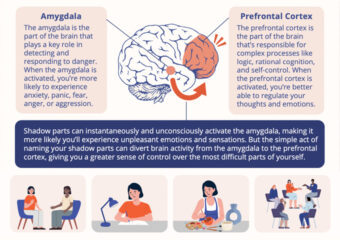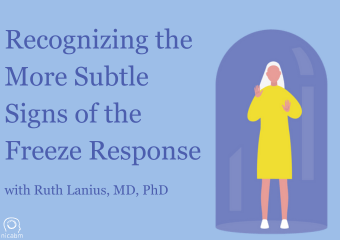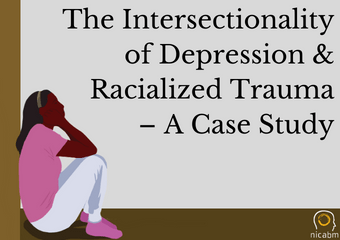By now, you’re probably familiar with many of the benefits of mindfulness. Maybe you even practice it yourself. Nevertheless, getting a client to try it out can still prove tricky for many therapists. So in the video below, Zindel Segal, PhD shares a simple way for you to help a client begin to explore the […]
[Infographic] The Neuroscience of Naming Shadow Parts
As therapists, we know the power of naming something. You’ve probably heard this before . . . . . . you have to name it to tame it. Well, not only does that sound catchy, but there’s a wealth of research to back it up. So when it comes to working with the parts of […]
Recognizing the More Subtle Signs of the Freeze Response
It’s often easy to identify the obvious cues that your client is in freeze . . . . . . but what about times when the signs are so subtle, you might dismiss it (or even overlook it)? In the video below, Ruth Lanius, MD, PhD shares how recognizing a more subtle sign of freeze […]
The Intersectionality of Depression & Racialized Trauma – A Case Study
Race and trauma can often be intertwined, particularly for BIPOC clients. And these experiences can leave them feeling disempowered and hopeless. What’s more, for clients with a history of racial trauma, this sense of hopelessness can deepen into depression, especially in a society that often fails to recognize the impact of racism. So how might […]
Three Questions to Help Clients Process and Release Regret
When regret takes hold, many clients spiral into self-criticism and self-blame . . . . . . and too often, it becomes a debilitating loop that only deepens their regret. But according to Ron Siegel, PsyD, there are three key questions you might ask to help your client begin to disrupt this cycle and release […]




